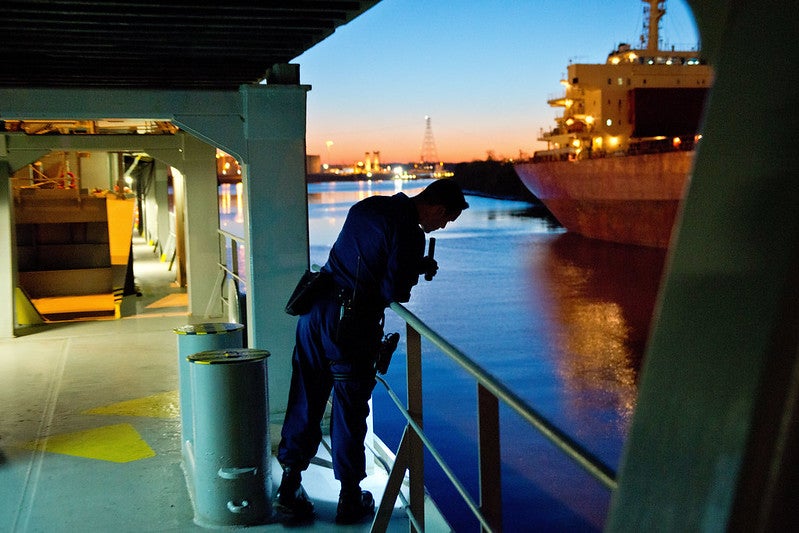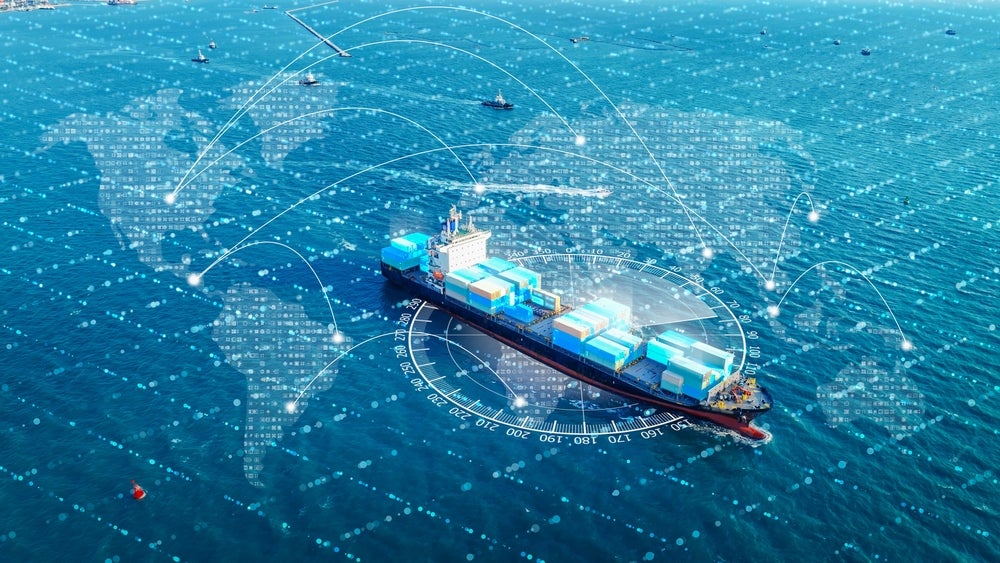
Every so often, a momentous tragedy gives us a sobering glimpse into the clandestine network of human traffickers that constantly operates in the shadows. The criminal groups involved in smuggling people across borders illegally are adept at treading softly, side-stepping law enforcement and almost always working beneath the notice of the wider public.
For the UK and Europe more widely, one such eye-opening moment came in October, when the bodies of 39 Vietnamese citizens – ten of whom were teenagers – were discovered in the back of a refrigerated lorry in an industrial park in Grays, Essex.
As the UK investigated what Essex Police called the largest mass-fatality victim identification process in the force’s history, the migrants’ route was traced back to the Port of Zeebrugge, where the container made it through security under the reported pretext that it was carrying biscuits and cookies. From there, the container crossed the channel to a small port of Purfleet in Essex before being picked up by the lorry. According to reports, the victims appear to have died by suffocation.
The incident has prompted soul-searching around border control and security at ports in the UK and across Europe. Officials at the Port of Zeebrugge – which did not respond to a request for comment – defended their security protocols while acknowledging that documents are checked on only around one in 400 containers bound for the UK. A similar ratio of checks are carried out on the UK side.
“It is clear that we and all our partners must enhance our response,” said UK home secretary Priti Patel in the House of Commons in late October. “All areas of government have a role to play, whether it’s in strengthening our borders and eliminating the pull factors in this country or addressing many of the root causes to suppress demand for illegal immigration.”
Human trafficking and port security
While the Essex lorry incident may have brought the conversation around human trafficking through ports into the spotlight again, it would be a mistake to think of it as an isolated incident. Britain’s worst-ever incident of mass migrant casualties was in Dover in 2000, when 60 Chinese migrants – 58 of whom had died – were discovered in a lorry that had also come from Zeebrugge.
How well do you really know your competitors?
Access the most comprehensive Company Profiles on the market, powered by GlobalData. Save hours of research. Gain competitive edge.

Thank you!
Your download email will arrive shortly
Not ready to buy yet? Download a free sample
We are confident about the unique quality of our Company Profiles. However, we want you to make the most beneficial decision for your business, so we offer a free sample that you can download by submitting the below form
By GlobalDataDiscoveries of trafficked migrants in shipping containers and trucks have become a regular occurrence at ports in the UK and elsewhere. Just a week after the Essex incident, a separate group of 12 Syrian and Sudanese migrants were found – unharmed, fortunately – in a truck on the Belgian motorway that leads to the Port of Zeebrugge. Although getting an exact idea of how many people are being trafficked through ports is impossible for obvious reasons, the numbers appear to be rising.
“It’s something that’s inherently unknowable, because we only know what we catch,” says Lucy Moreton, professional officer at the ISU, the union for UK borders, immigration and customs staff. “Are the numbers going up? Yes, absolutely. The numbers that we encounter are rising, so as a matter of logic, those that we miss must also be rising.”
In terms of both ports and coastal borders, UK officers have an immense task ensuring border integrity across such a wide footprint.
“The most effective method is to use a ‘Trojan Horse’ method, like containers, so nothing looks unusual,” says Peter Cook, maritime security expert and founding director of consultancy PCA Maritime. “Alternatively, arriving at locations along the coastline where they are unexpected. Both tactics have their risks, but both can and do work.
“Criminals are very adaptable; the UK coastline is 19,491 miles long, with 120 commercial ports and thousands of small ports, harbours and marinas, and almost innumerable coves, inlets, estuaries and so on, which are monitored by 10 Coastguard Operations Centres. It isn’t difficult to imagine how criminals could exploit this ‘minimalist’ approach.”
And for the ports themselves, as both Moreton and Cook acknowledge, the commercial imperative to keep containers, general cargo and ferry passengers moving through the facility overrides extra border security checks beyond normal protocol, which are considered the domain of the state.
“[The greatest weakness] is the sheer volume of containers moving through the ports and the speed with which they have to be processed and passed through the port in order to maintain the increasing demand,” Cook says. “Around 45% of the container fleet are [at least] 8,000 TEU [twenty-foot equivalent units] and the size is growing, with 78% of the order book for ships of more than 10,000 TEU capacity. Ports only have a finite amount of real estate and so speed of processing is paramount to the efficiency and profitability of the port.”
UK Border Force: staffing and mental health issues
In a 2018 report, the UK National Crime Agency confirmed a growing focus on Belgium-UK routes from organised human trafficking groups, which are exploiting migrants’ continued determination to find a way to the UK after the closure of migrant camps at Dunkirk and Calais in northern France. The report also noted that transport methods varied across different modes of illegal immigration through ports, with organised groups favouring refrigerated lorries and concealed spots in commercial vans, while opportunistic migrants are more likely to hop into the back of a soft-sided vehicle.
Whatever the specific mode of transport taken by undocumented migrants or trafficked people, the UK’s border protection officers are on the frontline at ports, and those who have witnessed the suffering involved in these unauthorised journeys often struggle to process it. Moreton says the ISU is working with the UK Border Force to improve mental health services for staff, which she describes as “quite a way from where we would want them to be”.
“Finding fatalities is relatively rare, but the conditions that people have been in, particularly if it’s young children – that’s very distressing,” she says. “We assist the French with monitoring the cameras for Eurostar and Eurotunnel, and we have had instances where people have just seen one too many people electrocuted. That is extremely difficult to observe.”
UK border inspection staff levels were reduced by around 30% between 2010 and 2015, Moreton says, and although officer numbers are increasing again they have not yet returned to pre-2010 levels.
With existing staff nowhere near numerous enough to consider checking every incoming container, the force conducts its searches following an ‘intelligence-led’ strategy, where containers are selected for inspection based on factors such as what has been declared, routing patterns and specific information that may have been passed on by a consignor.
Creating the space to search
Critics of the UK’s ‘intelligence-led’ strategy for border checks have argued it simply disguises a lack of capacity in border inspection. For Moreton, this isn’t simply a question of staffing levels but also of physical space to carry out this work at ports.
“I hear the argument that intelligence-led control masks a lack of capacity; to a certain extent that’s absolutely true,” she says. “You can only generate intelligence if you have the capacity to randomly search, and that is limited, partly because we don’t have enough staff but actually more so because there isn’t enough space.
“The significant limiting factor at ports is the amount of space we’ve got. In order to offload a container, open it, search it, put it back together, re-attach it to whatever tractor unit needs to move it on – we need far more land space than we’ve got. 100% searching would be the ideal, but there’s always a trade-off between how much it costs to buy the land, to employ the staff, to get all the detection equipment in place, against the value that the UK will see for national security.”
Speaking of equipment, there is a bewildering array of detection technologies that can be used to quickly check trucks and containers for stowaways or illegal contraband, potentially allowing for more to be achieved with fewer boots on the ground. But different technologies are effective in different applications. For example, X-ray machines are very effective at scanning containers and bulk liquid hauliers, but don’t work on lead-line refrigerated containers.
So while UK border officers have access to a small number of X-ray machines and use detection dogs, listening devices, heart-beat monitors and CO2 probes – the latter of which can detect the breath of a hidden individual – the ISU would like to see greater investment in the right tech.
“We have no heat sensors, for example, which would be effective,” says Moreton. “Everything’s only effective on one or two types of container, so you do need quite a breadth of equipment available, and the staff to run it.”
Investing in port security: does the political will exist?
More staff, more space, better technology – all of these would enhance the UK’s port security regime, and they all require substantial investment. With border control the strict responsibility of the national government and commercial port operators unlikely to assist any further than the law requires, this may be a problem that needs to be solved from the top. As well as investment, the UK Government does have the power – under a provision of the Immigration Act 1971 – to compel ports to make changes to improve security.
Boris Johnson’s Conservative Party, which was returned to power in December after a landslide election victory, might be well-placed to make these investments. Moreton notes that Tory governments tend to be more “border-sensitive” than their Labour rivals, and taking back firm control of the country’s borders has been a long-standing talking point in the ongoing Brexit process.
But these factors alone hardly guarantee new support and funding for port security in the UK. Several warnings from authorities such as the Chief Inspector of Borders – for instance highlighting the vulnerability of small, often unmanned ports such as Purfleet to human trafficking – have gone largely unheeded in recent years.
“Voters are mostly ‘sea blind’,” says Cook. “They fail to understand how reliant their country is on seaborne trade, for instance in the UK, where ports cater for about 95% of the UK’s foreign trade. The challenge being, if the voters don’t recognise it, improving the security won’t win votes.
“Sadly, isolated incidents, whilst tragic, don’t provide sufficient evidence for things to change. If migrants get into any country, the last thing they will do is tell everybody they are there and how they got there. A quiet infiltration, under the radar, will not trigger the investment required to stop the problem.”







